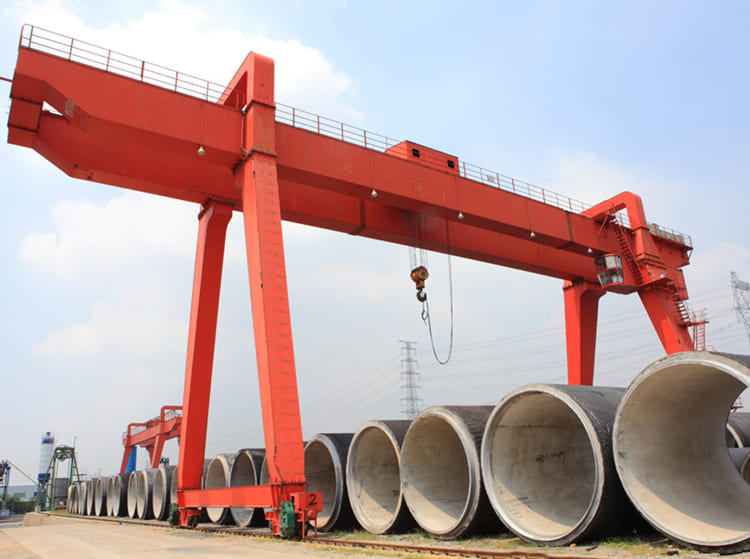Bezpečnostné opatrenia pre inštaláciu portálového žeriavu
1. Pred inštaláciou portálového žeriavu by sa mal určiť plán inštalácie na základe zdvíhacieho zariadenia používaného na inštaláciu na mieste a mali by sa sformulovať inštalačné technické opatrenia. A poskytnúť inštalačným pracovníkom bezpečnostnú technickú inštruktáž.
2. Miesto inštalácie by malo byť rovné a vytvrdené. Vstupné a výstupné cesty by mali byť voľné a bez prekážok nad nimi. Spĺňajte požiadavky na autožeriavy, dopravné vozidlá vstupujúce a vystupujúce z miesta a zdvíhacie operácie.
3. Základ koľaje a základ nosného bodu automobilového žeriavu by mali spĺňať požiadavky na ložiská.
4. Okolo miesta inštalácie by mali byť usporiadané bezpečnostné varovné vedenia a mali by byť umiestnené potrebné bezpečnostné značky a výstražné značky.
5. Pred začatím inštalačných prác je potrebné skontrolovať inštalačné nástroje a potrebné materiály. Inštalácia musí byť vykonaná v poradí určenom inštalačným plánom.

6. Vysokopevnostné skrutky, oceľ a oceľové lanká použité počas inštalácie musia mať osvedčenie o zhode a musia sa odobrať vzorky na opätovnú kontrolu, aby spĺňali konštrukčné požiadavky.
7. Keď to nosnosť zdvíhacieho zariadenia dovoľuje, mali by sa v maximálnej možnej miere vykonávať pozemné montážne práce, aby sa znížili práce vo veľkých nadmorských výškach.
8. Pred zdvihnutím komponentov by sa malo vykonať skúšobné zdvihnutie, aby sa skontrolovali podmienky namáhania každého dielu. Až keď je všetko normálne, môže sa pokračovať v zdvíhaní.
9. Umiestnite polkruhové chrániče rohov (ochrany drôtených lán) na okraje zdvíhacieho oceľového lana a zariadenia, aby ste zabránili poškodeniu oceľového lana.
10. Keď sú nohy dočasne vzpriamené, spodný vychádzkový vozík by mal byť upevnený, aby sa zabránilo pohybu. Lanové navíjacie laná by mali byť usporiadané spoľahlivo a v dostatočnom množstve.
11. Počas procesu inštalácie portálového žeriavu, keď operátori potrebujú pracovať na komponentoch vo veľkých výškach, musia zabezpečiť, aby komponenty boli pevne podopreté a aby boli prijaté ochranné opatrenia v súlade s príslušnými normami a špecifikáciami pre operácie vo veľkých výškach.



























